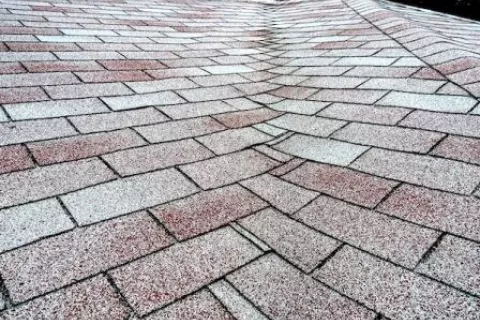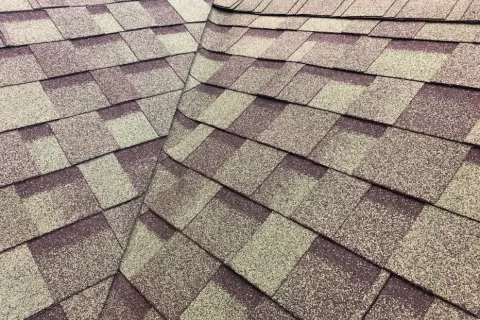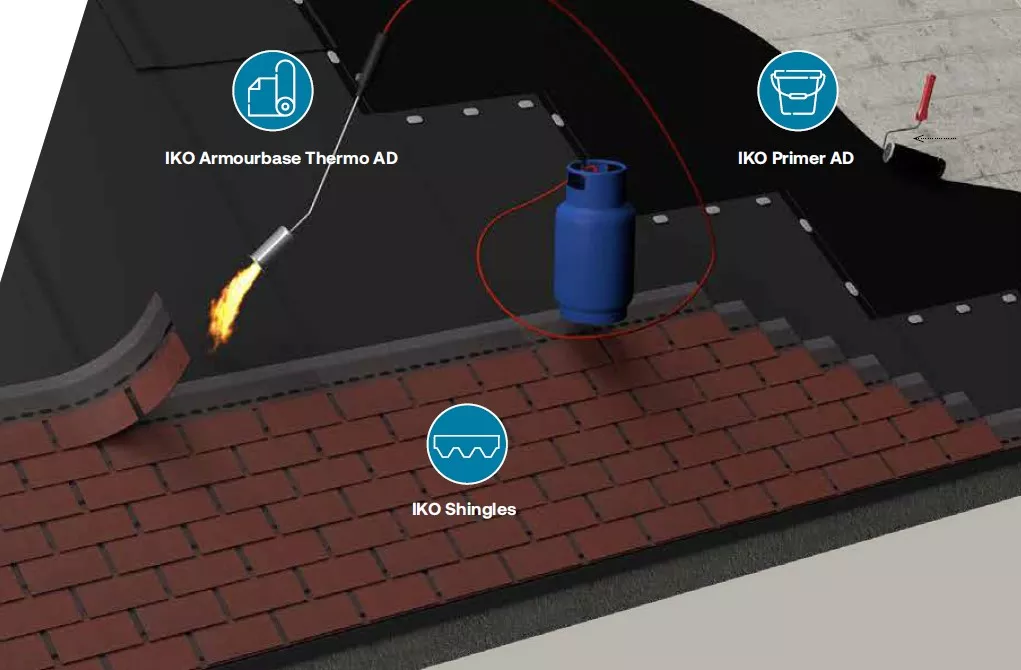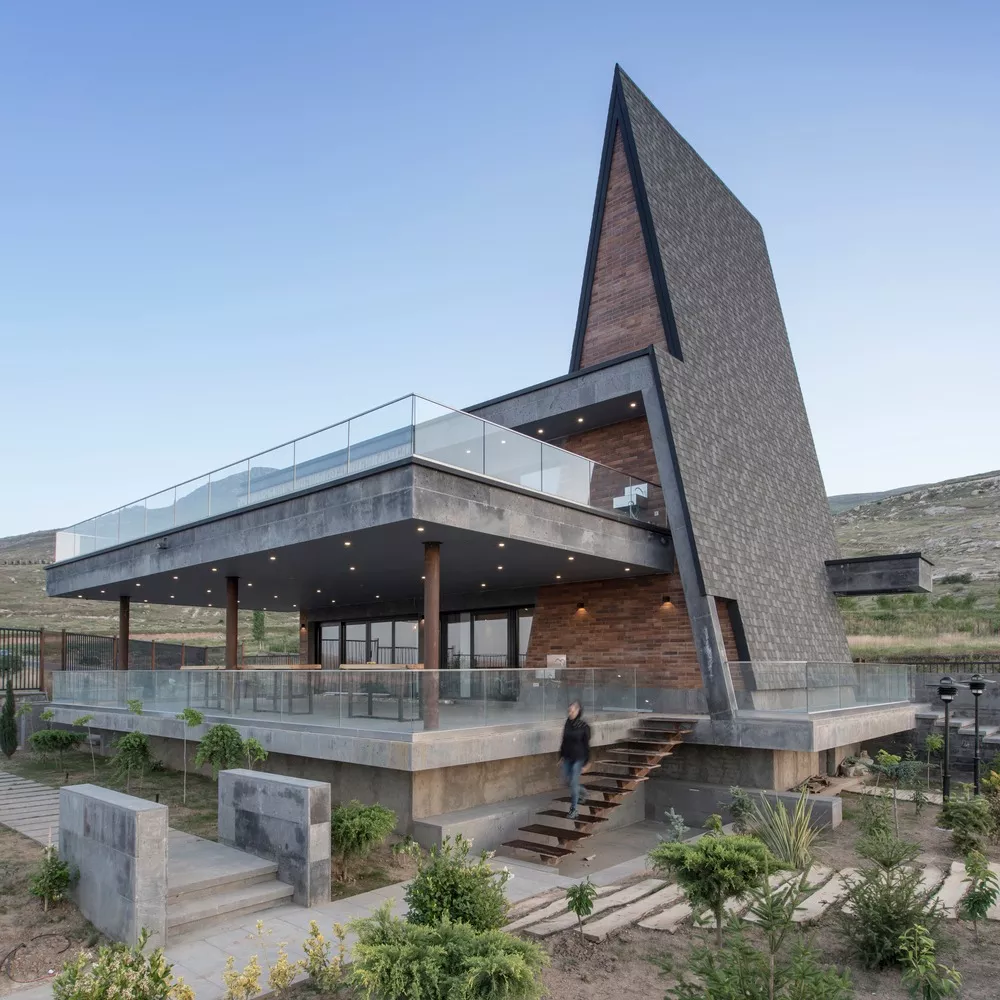Search
Search
1361 results were found.
Some installation tips for low slope and curved dormers:
- Always use a self-adhesive Armourbase Stick or Armourbase Pro Plus underlayment for parts with slopes from 9,5° to 20°
- For the vertical dormer wall it is very handy to use these underlayments as well
- Use only the necessary amount of nails to fix an underlayment on flatter parts of dormers
- For slopes between 4° - 9,5° use Armourbase Thermo AD and install shingles without the nails
- With every valley on the dormer or slope inclination where Closed-Cut method should be applied, follow the rule of overlapping the shingles from the lower slope to the higher slope
- With IKO Thermo System and torch-on installation apply shingles up to 15° maximum, because from 15° you can use the standard nailing method
- Don’t forget to use Shingle Stick for all roof details, roof penetrations and especially for metal flashings
Resume on dormers
Many people invest in dormer roofs as they can transform dark, stuffy loft spaces into bright and spacious living areas. Although dormer roofs require major alterations to a roof structure, the payoff is definitely worth the effort.
And your complete roof is covered with 1 single esthetical solution: You can choose any favorite shingle from the complete professional IKO Shingles range.
Interested in the product mentioned in this blogpost?
Roof Valley - How to install it watertight with shingles?
A roof valley is formed where two sloping roof areas intersect to create an internal roof channel that drains run-off water from higher roof sections. The valley is one of the most critical details on the roof because it collects a lot of water. An improper installed valley can be the cause of serious leaks.
Essentially, there are three main ways to shingle a roof valley: woven, closed-cut and open. There are various techniques you’ll need to know for each type of installation, which will be explained in this blog. Before you decide how to shingle a roof valley, you will need to consider your materials, the climate and the desired look of the roof.
The three methods to shingle a roof valley
Preparation of the valley with an underlayment is a critical part of your roof installation. The underlayment is an integral part of every valley and provides a waterproof base. All valley installations require appropriate underlayment layers. We recommend using our IKO Armourbase range of underlays, which are very durable polyester membranes on bituminous base. Valley underlayment sheets should be centered in the valley and secured with only enough fasteners to hold them in place until the primary valley installation is complete. Self-adhesive IKO Armourbase Stick underlayment may not require too much fastening. The underlayment material from the two adjacent roof planes should overlap the valley base sheet by at least 15 cm. Also all the fasteners should be kept a minimum of 15 cm from the valley's center line.
1. Woven Valley Shingle Installation
To achieve a woven valley installation, a roofing professional lays shingles in the valley and weaves them together. Some homeowners prefer the consistent look that a woven valley provides. But if the shingles are not laid properly in the valley, a woven valley may not lay flat, creating bumps and detracting from the overall look of the roof. With this method it is not necessary using bituminous mastic in the valley. However it is very important to push the shingles snugly into the valley, while not nailing within 15 cm of the valley center. If this is not done properly, hollow space may develop under the shingles. The empty space makes the shingles vulnerable to penetration, either by footsteps, hail or other debris.

Woven valleys are suitable for 3-tab shingles or low-profile shingles
as their single layer construction allows them to be woven together and to be overlapped more easily. When considering how to shingle a valley with architectural shingles (Cambridge Xpress and Cambridge Xtreme), you must take into account their thickness and reduced flexibility. Laminated shingles are more liable to create bumps in woven valleys. Often they are too thick to be woven at all. Therefor IKO does not recommend installing a woven valley with laminated shingles.
2. Closed-Cut Shingle Valley Installation
Closed-cut valleys are installed quickly and have a cleaner, sharper look than woven valleys. From the ground, it looks as the shingles meet in a clean line in the center of the valley. One layer of shingles actually crosses the valley beneath the other. For closed-cut valleys, shingles on one roof plane are installed through a valley and extended at least 30 cm into the intersecting plane. Shingles from the other side are run to the valley and cut along a line parallel to and 5 cm before the center line. Each end shingle strip should have the upper corner trimmed and set in a bead of roof mastic.

We recommend to start the installation with the shingles on the valley side with the lowest slope or shortest distance to the ridge. That way the larger amount of water from the steeper roof section or the bigger roof accumulates in the valley and does not flow under the shingles.


